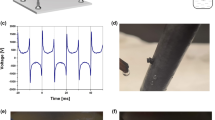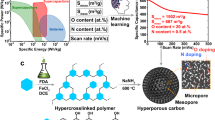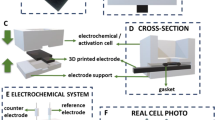Abstract
FROM the abstract of the proceedings of the Physical Society, given in NATURE, vol. xxv. p. 426, I learn that Prof. S. Thompson has been making some experiments which tend to show that the observed diminution of the resistance of carbon under pressure in such instruments as the carbon relay, rheostat, and microphone-transmitter is really due to the contact between the electrodes and the carbon. No doubt the greater portion of the observed diminution of resistance is due to this cause, and I have already pointed out in my paper on “the Influence of Stress and Strain on the Action of Physical Forces,” Part ii., Electrical Conductivity, an abstract of which (NATURE, vol. xxv. p. 401) was read before the Royal Society on January 26, that the effect of a given amount of longitudinal traction or compression per unit area on the electrical resistance of some carbon rods was not greater than is the case with the metals tin and lead, for whereas a stress of 1 gramme per sq. cm. produced a variation of conductivity of from 7684×10-12 to 11420×10-12 per unit in the case of five carbon rods, the corresponding numbers were, with tin and lead, 10540×10-12 and 17310×10-12 respectively. The carbon rods were of the sort used for the purposes of electric lighting, and their elasticity varied in almost the same proportion as their susceptibility to change of resistance from stress, so that, the alteration of resistance divided by the strain produced, ranged in the five specimens between the limits 2.144 and 2.835. The corresponding numbers in the case of most pure metals (aluminium is an exception) are greater than these, and in the case of nickel, with which metal curiously enough the effect of moderate longitudinal traction is to decrease the resistance, the alteration of conductivity is much greater.
This is a preview of subscription content, access via your institution
Access options
Subscribe to this journal
Receive 51 print issues and online access
$199.00 per year
only $3.90 per issue
Buy this article
- Purchase on SpringerLink
- Instant access to full article PDF
Prices may be subject to local taxes which are calculated during checkout
Similar content being viewed by others
Author information
Authors and Affiliations
Rights and permissions
About this article
Cite this article
TOMLINSON, H. The Electrical Resistance of Carbon under Pressure. Nature 25, 459–460 (1882). https://doi.org/10.1038/025459c0
Issue date:
DOI: https://doi.org/10.1038/025459c0



